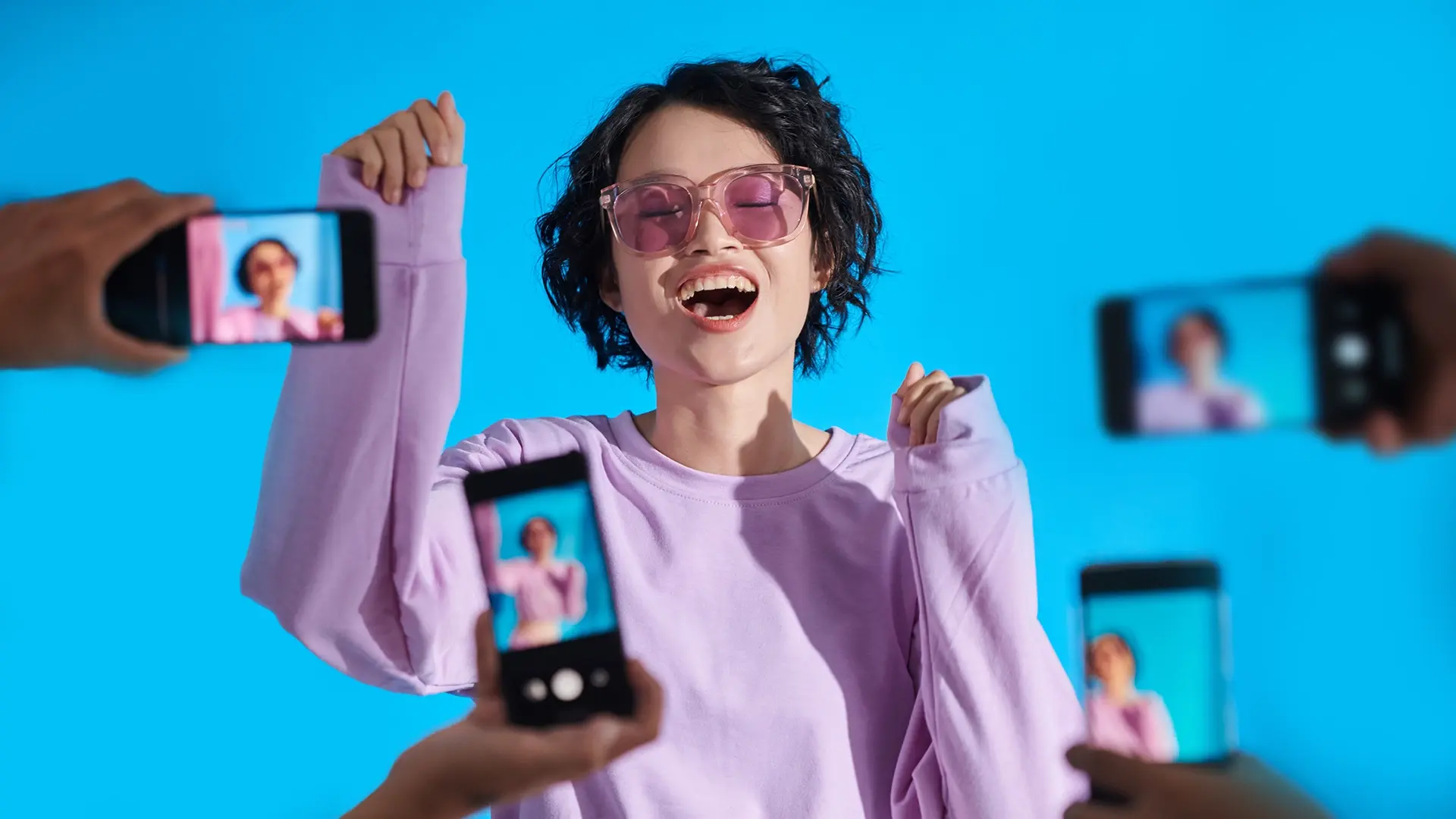Imagine standing at the edge of a vast, rich ocean and choosing to fish from a puddle: that’s what not tapping into the Gen Z audience looks like. Currently comprising around ⅓ of the global population, Gen Z is progressively occupying more ground in the marketing landscape - and with that come great opportunities for your brand.
Why should you focus on Gen Z when it comes to display advertising?
Besides the fact that Gen Z is the next generation in line to occupy the largest place in your marketing audience, there are more things that make focusing on them imperative. In the US alone, Gen Z wields an estimated $360 billion in spending power. And the best part? Gen Z is your ideal audience. With 90% of them owning a smartphone, Gen Z is the most tech-proficient generation of all time. So, if you’re not already optimizing your display advertising strategies for Gen Z, you are leaving your most important audience potential untapped.
With every generation carrying some special characteristics of their own, this goes beyond tweaking your messaging. When it comes to display advertising campaigns for Gen Zers, you will need to adjust to their preferences, channels, and ways of communicating. So, where do you start?
In this article, we’re going to dive into the relationship between Gen Z and ads, so your marketing team can better understand how Gen Z interacts with display ads and what they expect from brands. Applying this understanding in your industry will help you tailor your display advertising campaigns to a large, untapped potential.
How Gen Z Interacts with Display Ads
Gen Z is a great audience to tap into, but it’s also a demanding one. For this audience, static ads and sudden popups just won’t cut it. This is the generation that grew up with the internet, so their expectations are higher than any other audience’s before them. So, what does this mean for your strategy
More personalization in your display advertising campaigns
For starters, the demand for personalized experiences is higher. According to a study by Telus, 62% of Gen Z say they would pay more for a brand's products if that brand provides a personalized experience. That percentage is higher than for any preceding generation.
Gen Z wants your brand to know and understand them. Given the chance, they will opt for personalized experiences that feel like a private conversation with brands that understand them, without pushing their privacy boundaries. And transparency is greatly valued by this part of your audience.
How can you cater to that?
It all starts with smart targeting. Segment your audience based on behavior, interests, and context. Then use Dynamic Creative Optimization (DCO) to serve tailored ad variations in real time. But you need to be careful: there is a fine line between personalization and overstepping. Your audience wants to feel seen and understood while still protecting their privacy. So, while a ‘Hi, [Name]’ won’t cut it with Gen Z, it’s equally wrong (if not worse) to make them feel like their privacy is invaded.
You also need to be as transparent as possible. So, when it comes to first-party data, clearly communicate to your audience what their data will be used for, and let them decide whether to opt in. This will create a relationship of trust with them, building a better customer relationship and increasing loyalty in the long run.
And how about your creatives? When it comes to display advertising for Gen Z, they need to feel like a personal conversation. Tap into their interests according to your industry and product, but remember that it’s also about the way your message comes across: casual, relatable, and culturally aware. Gen Z favors informal communication, with 66% of them being more likely to engage with brands that use conversational language. And when it comes to social media advertising, it pays to know your cultural references: 85% of Gen Z prefer brands that use memes or cultural references appropriately.
That being said, your team needs to be careful with its content: communication should be all about authenticity, not just riding the popularity waves. Gen Z knows how to distinguish between authentic content and a popularity chase, so make sure you build as much of an honest relationship as possible with this audience.
Display ads for a visual-first generation
YouTube, Instagram, TikTok, Snapchat: Gen Z has grown up with visual-first platforms, relying heavily on videos. They expect more than a static ad: they need short-form, visually engaging content. And if it doesn’t cater to that, your brand risks losing them from the audience pool.
How can you cater to that?
Gen Z expects motion. Luckily, you can cater to that. Use short-form video and animated banners to grab their attention. Try to make your creatives interactive when possible: incorporate swipeable elements, polls, or tap-to-explore features in your display creatives to boost engagement. Remember to tailor your storytelling to small timeframes. Ideally, keep display video ads under 15 seconds to create brief, engaging, memorable content.
Omnichannel consistency for a seamless Gen Z experience
Social media platforms, web surfing, mobile apps: Gen Z are the masters of switching channels. So for a brand to catch their attention, it needs to be visible to them everywhere they visit. But it doesn’t end there: Gen Z won’t go for any experience that feels disconnected and artificial.
How can you cater to that?
Omnichannel consistency is imperative to Gen Z, so you need to design experiences that are consistent across all channels. Keep the messaging varied but with a consistent tone, making sure to keep the main elements of your campaign identity intact. Your display advertising campaign should be varied enough to prevent creative fatigue, but consistent and cohesive enough as to be easily and intuitively recognizable for Gen Zers hopping from one platform to another.
Display Ads for Mobile
With an average daily time of 6 hours and 27 minutes spent on their phone daily, Gen Z are the generation most familiar with cell phones. Smartphones are their default device for everything from communication to product discovery. So, your mobile display ads need to be your number one display advertising priority.
How can you cater to that?
When designing display ads for mobile, make sure to prioritize video and motion-based content. Keep your ads short - ideally 15 seconds or shorter, so you can gain but also keep your audience’s attention. Since a large number of smartphone users keep their sound off when scrolling, it’s important to add subtitles and animated text so your storytelling is expressive and seamless even without sound. And when it comes to user experience, prioritize clear, tap-friendly CTAs that stand out effortlessly.
This solves how your display ads look on mobile, but how about how they feel? Gen Z has an aversion for experiences that look forced or feel like an interruption. It’s important that your ad feels like it belongs to their feed. It should be part of their experience. Make sure your ads are shown where they blend in harmoniously with the right content, and the visuals and creative concepts are familiar to your audience - think TikTok-style transitions, Reels-style captions, and UGC-style visuals. Remember that mobile-first means fast loading times, which is something to always have in mind when designing your mobile display ads.
Display advertising examples that resonated with Gen Z
Creating a display advertising campaign that resonates with Gen Z might seem like a lot of work. But in reality, ads targeted to Gen Z are the same as any other: you need to understand how to talk to that specific segment of your audience. If you’re curious to see what a successful display advertising campaign for Gen Z looks like in action, here are some examples of companies that got it right:
ASOS's 'Unreal Friends' Campaign
In 2024, ASOS launched the 'Unreal Friends' campaign. The campaign featured personalized product recommendations and interactive elements, aligning with Gen Z's expectations for highly engaging and relevant content. ASOS’s ‘Unreal Friends’ campaign featured a combination of digital display ads, out-of-home (OOH) placements, and social media content. ASOS partnered up with Criteo to enhance its display advertising capabilities, allowing for personalized and dynamic ad placements across various digital platforms.
Levi's "Buy Better, Wear Longer" Campaign
Levi's "Buy Better, Wear Longer" campaign is a great example of how to create display advertising campaigns that appeal to your Gen Z audience. Launched in April 2021, the campaign centered around sustainability, addressing the environmental impact of overconsumption when it comes to the fashion industry. Levi’s succeeded in speaking GenZ’s language perfectly: the brand aligned the product with their audience’s values, created visuals that resonated with them, and inspired the audience with flawless storytelling.
Levi’s utilized a multi-platform approach, incorporating various display advertising strategies to reach Gen Z effectively. Levi’s campaign focused heavily on programmatic display ads, partnering with media agency OMD EMEA, as well as social media advertising, with targeted ads on platforms popular with Gen Z, such as Instagram and YouTube.
Conclusion
Gen Z is already shaping up to be the driving force behind the marketing landscape. And if your team isn’t focusing on them, your brand is risking falling behind. Looking into what this part of your audience expects from brands, how they prefer to communicate, and what they value the most is a great start. After deploying your display advertising campaign, remember to continuously track and optimize your campaign performance. If you’re not sure how to do this, here is a detailed guide to help you start.







